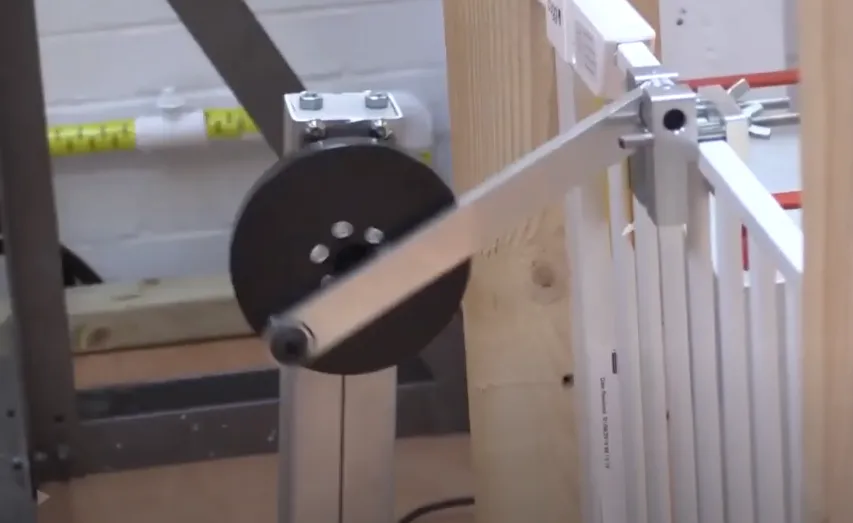ASTM F963 Heavy Metals and Element Migration in Children’s Furniture Testing
The Children’s Furniture Safety Testing service underpins the critical need to ensure that children are safe from harmful materials. The ASTM F963-18 Standard Specification for Consumer Products for Children mandates testing of various elements and heavy metals in toys, infant products, and furniture intended for use by children under 12 years old.
The ASTM F963 standard is designed to protect young users from potentially dangerous materials. One such test focuses on the presence of heavy metals and element migration within these products. Heavy metal contamination can lead to serious health concerns when ingested or absorbed through skin contact, particularly in children who may be more susceptible due to their developmental stage.
Element migration testing ensures that elements like chromium, cadmium, lead, nickel, and others do not leach into the environment from the product. This is especially important for furniture components such as paint, varnish finishes, or decorative materials, which could come into contact with a child’s skin or mouth.
This testing is performed using sophisticated analytical techniques to detect even trace amounts of these elements in the products. The process involves thorough sampling and preparation followed by rigorous analysis using instruments like Inductively Coupled Plasma Mass Spectrometry (ICP-MS) and X-Ray Fluorescence (XRF).
The results are then compared against the specified limits set forth by ASTM F963, ensuring that all products meet safety standards. Compliance with these regulations not only protects children's health but also safeguards manufacturers from legal action and reputational damage.
Why It Matters
The importance of testing for heavy metals and element migration in children’s furniture cannot be overstated, especially when considering the prolonged exposure to potentially harmful materials. Children often spend considerable time interacting with their furniture, particularly during playtime or study sessions.
- Prolonged Exposure: Unlike adults, children may have extended periods of contact with these surfaces, increasing the risk of ingestion or skin absorption.
- Safety Concerns: Heavy metals like lead and cadmium can cause severe health issues including neurological damage, behavioral problems, and even cancer. Even trace amounts of these elements are concerning given their potential long-term effects.
- Legal Responsibilities: Non-compliance with safety standards can result in product recalls, fines, and loss of market share. Demonstrating compliance is essential for maintaining a positive brand image and consumer trust.
The testing process ensures that manufacturers are aware of any potential risks early on, allowing them to take corrective actions if necessary. This proactive approach not only mitigates legal issues but also promotes safer products in the marketplace.
By adhering to ASTM F963 standards, companies can provide peace of mind to parents and caregivers knowing that they have taken every precautionary measure to ensure their child’s safety. Ultimately, this commitment to quality reflects positively on both the product and its manufacturer.
Scope and Methodology
| Parameter | Description |
|---|---|
| Sample Collection | Representative samples are collected from various parts of the furniture, including painted surfaces, upholstery, and fabric. |
| Sample Preparation | The collected samples undergo thorough cleaning and drying processes to ensure accurate analysis. |
| Analytical Techniques | Advanced instruments such as ICP-MS and XRF are used to identify and quantify the presence of heavy metals and elements. |
| Data Analysis | The analytical data is compared against the specified limits in ASTM F963 to determine compliance. |
The testing process begins with careful sample collection from various parts of the furniture. This ensures that all potential sources of contamination are evaluated. The samples are then prepared through cleaning and drying procedures, which remove any external contaminants that could affect test results. Once prepared, they undergo analysis using specialized instruments capable of detecting even trace amounts of heavy metals.
The use of ICP-MS allows for precise measurement of metal concentrations down to parts per billion levels, while XRF provides rapid screening capabilities. Both methods are essential in ensuring accurate and reliable data that can be compared against the limits set by ASTM F963. The final step involves analyzing the collected data against these standards, allowing us to assess compliance.
This comprehensive approach guarantees that each product meets stringent safety requirements, providing assurance for both manufacturers and consumers alike.
Why Choose This Test
- Compliance with Industry Standards: Ensuring adherence to ASTM F963 helps maintain regulatory compliance while protecting your brand reputation.
- Risk Management: Identifying potential issues early allows for timely corrections, reducing the likelihood of costly recalls or legal challenges.
- Consumer Confidence: Demonstrating commitment to safety builds trust with parents and guardians who value their children’s well-being above all else.
- Prompt Reporting: Quick turnaround times mean faster results, enabling quicker decision-making processes throughout your supply chain.
- Detailed Documentation: Extensive documentation ensures transparency and accountability in every aspect of the testing process.
- Expertise: Our team comprises experienced professionals who stay updated on all relevant standards and guidelines.
- State-of-the-Art Facilities: Equipped with cutting-edge equipment, our laboratory delivers accurate and reliable test results consistently.
Choosing this test ensures that you meet not only legal requirements but also exceed expectations in terms of quality and safety. It’s an investment in your brand's reputation and customer satisfaction.





